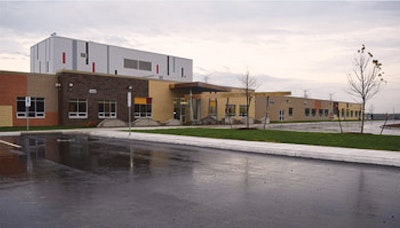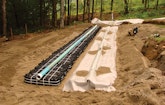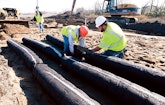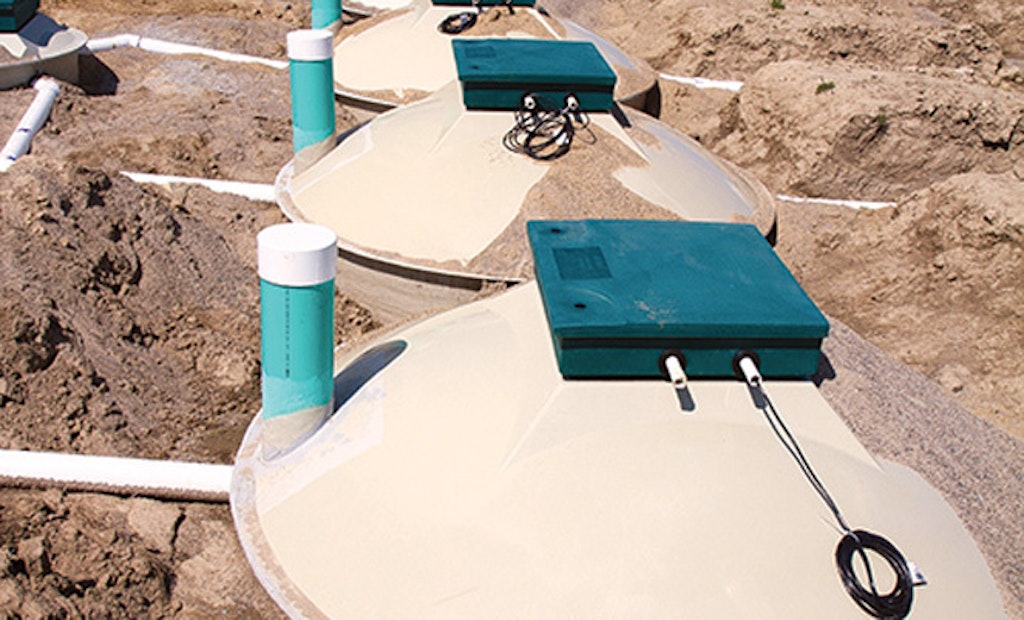Interested in Onsite Systems?
Get Onsite Systems articles, news and videos right in your inbox! Sign up now.
Onsite Systems + Get AlertsBakery seeks solution for treatment of high-strength waste
Problem: Rise’n Roll Bakery and Deli in Middlebury, Indiana, had an existing septic system that was no match for its increasingly large flows and high BOD of 6,000 mg/L.
Solution: Installer Akin’s Excavating brought in Meade Septic Design to evaluate the situation. Meade developed a design that reused as much of the existing system as possible, while adding components necessary to handle the flow. The final design incorporated 24-hour time dosing to 12 AERO-TECH AT-1500 aerobic treatment units (four in parallel and three in series) from 8,000 gallons of time-dose tank capacity. This design also included 6,000 gallons of grease traps, 10,000 gallons of septic tanks, and absorption fields totaling more than 10,000 square feet.
Result: The bakery now has a relatively low-maintenance system that easily handles their unique, high-strength waste needs. 574/935-0908; www.aerotech-atu.com.
Units help reduce effluent nitrogen levels at school
Problem: A school in Ontario, Canada, had an undersized wastewater treatment plant that was not meeting the Provincial Ministry of the Environment total nitrogen effluent criteria for subsurface discharge. Incoming flow was measured at 1,850 gpd with an ammonia concentration that ranged between 175 to 311 mg/L.
Solution: Modifications were made to treat the increased flows and to facilitate nitrification/denitrification processes to reduce TN to the new MOE-imposed criteria. The design concept included the addition of ECOPOD-N units from Delta Environmental to the existing system to provide tertiary treatment, including further BOD/TSS reduction, nitrification and denitrification. The first unit is operated in an aerobic mode. The second is operated in an anaerobic mode to facilitate denitrification. The third is operated in an aerobic mode to provide polishing of the effluent. The units are fixed-bed biological reactors. A carbon feed is added to the anaerobic unit to provide a carbon source for the denitrifying bacteria. The system recirculated 100 percent of plant effluent discharging from the ATU units back to the initial anaerobic septic holding tanks.
Result: As a result of a combination of the ECOPOD-N’s ability to reduce total nitrogen along with some simple process modifications, test data shows the system is able to consistently reduce TN below the MOE criteria of 5 mg/L. 800/219-9183; www.deltaenvironmental.com.
System installed on site with multiple constraints
Problem: A homeowner in Littleton, New Hampshire, had a failed drainfield that was improperly installed. The property had multiple site constraints, including a close property boundary, a heavily sloped site, and a rock retaining wall made up of boulders. A system with a reduced footprint was needed to minimize impact and the amount of fill material needed to keep costs down.
Solution: Lynn Mayo of Far North Designs specified the 20-unit Eljen GSF B43 system. The site had a 12-minutes-per-inch perc rate for a four-bedroom home. Schofield’s Septic Service installed the system in two leach lines, making the system 41 feet long. Fill material was used to level the system area. The leachfield is comprised of the GSF units placed on a 12-inch stabilized base of ASTM C-33 sand, and is gravity fed from the existing septic tank.
Result: The homeowner was able to get the new, code-compliant system installed quickly with minimal impact to the site. 800/444-1359; www.eljen.com.
Leachfield system solves challenges for mine facility expansion
Problem: An Indiana coal-mining operation was in need of expanded worker facilities. The presence of disturbed mine spoils, shale and limestone throughout the site made system siting a challenge.
Solution: The design and installation of an Infiltrator Advanced Treatment Leachfield (ATL) system reduced the drainfield’s footprint by nearly half compared to a stone-and-pipe system. Extensive soils investigation and testing were conducted to locate the 3,150 gpd system over soils without potentially large voids that would allow effluent to migrate into the native soils without proper treatment. The modular geotextile media, sand-lined wastewater treatment and dispersal leachfield system is designed for quick and easy installation, has no moving parts and no venting or additional sand cover requirements.
Result: The system treats the effluent from locker room showers, an administrative office and a machine shop before it enters the disturbed soils. Effluent flows out of the facility via a 4-inch PVC pipe to the first septic tank. It then moves to a pump tank where it is dosed twice daily using on-demand alternating pumps to four ATL beds creating a drainfield. Effluent is absorbed into the underlying native soil. Each zone took two days to install, then was covered with 12 inches of topsoil hauled from another area of the mine and seeded. 800/221-4436; www.infiltratorwater.com.









